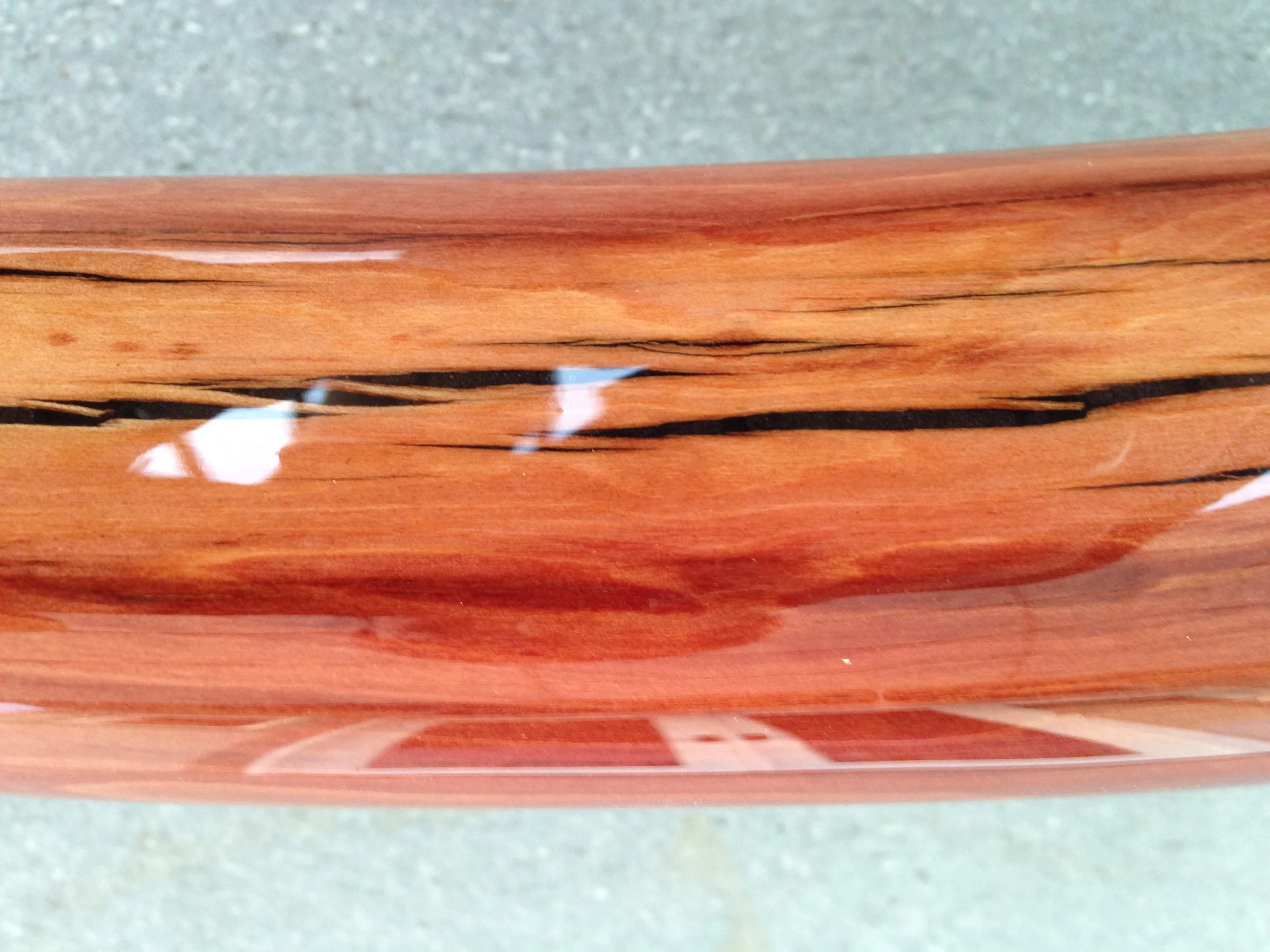Uncontrolled drying can lead to "checks" or cracks, and when treated right can become beautiful texture.
Drying vs. seasoning
Wet wood can be already seasoned, green wood hasn't yet seasoned.
The discrepancy is where the water content in a piece of wood lies, essentially intracellular or extracellular (inside of cells or outside of cells.) When acquiring green wood, I will seal the ends as soon as possible. End grain releases moisture much faster than anywhere else in a piece of wood, and uncontrolled moisture loss will often lead to undesirable results like splitting. Sealing the ends of a green log slow intracellular moisture loss by forcing the moisture to seep outwards through the entire thickness of it, keeping the piece at a more uniform moisture content and decreasing defects.
When I find driftwood it is sometimes dry, and sometimes wet. I normally only collect driftwood that has obviously been down for a long time, and although sometimes wet, it can be seasoned. In this case there is no need to seal cut ends, as all that will escape will be extracellular moisture, and won't impact the integrity of the log.
In the end, I use a digital moisture meter to measure the moisture content of wood that I'm using. I often write dates on logs so that I have a ballpark reference, so that I'm not checking the moisture content of each log every month. For different woods I have a range of maximum (low) moisture content that they must reach before I consider them to be acceptable materials for making a didgeridoo.
